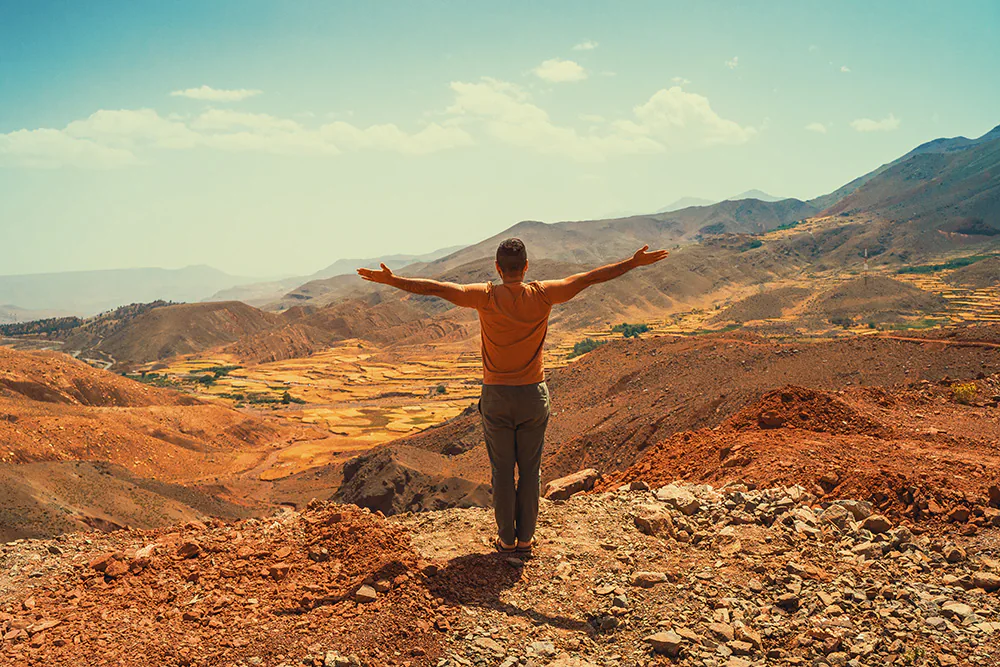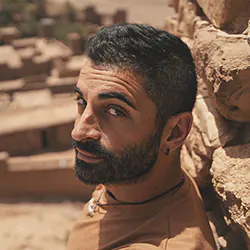“Driving in Morocco is for the brave”, “We recommend using public transport to avoid the crazy Moroccan traffic” are just two of the many phrases I came across before leaving for Morocco. For someone who likes to manage the pace of their journey by renting a car, these kinds of phrases, contained in the various blog articles, are disheartening. But is it really so absurd to drive in Morocco?
Lucky for you, I held out and rented a car. Today, I can tell you my experience and (almost) completely dispel this myth
A little awareness
Regardless of where you go, you need to be honest with yourself and evaluate your driving and adaptability skills before starting the engine. Personally, the 17 years of driving experience, with some important tests in the Roman chaos and in Amman, gave me a certain amount of self-confidence, which is why I made the decision that Morocco would be my further stress-test .
A little preparation (offline maps and / or local sim card)
What you do before you even get in the car and before you leave your country is as important as what you do when you turn the key in the ignition. Google Maps allows you to download the maps of the places you want to visit, to be able to use them even offline, if you decide not to buy a local sim or if you have to cross areas not perfectly covered by the telephone network. In offline maps, which you can use, thanks to GPS, even without a network, for all your travels, you can save your entire itinerary. Having a well-defined itinerary helps you to limit surprises and unexpected events. Once all this is done, simulating the movements, always using the Google service, to see how many hours of driving will be needed, between one stage and another, can be an excellent idea, for a more complete overview. Arrived at the airport, in Morocco, you should be able to see the stands of the telephone companies that, from 100 dirhams upwards (about 10 euros), offer solutions for sims that can take advantage of the Moroccan network, avoiding, if necessary, to pay too much with the roaming. The offers include minutes of phone calls, text messages and and some gigabytes. With the 10 euro solution, I managed to have all this for all 12 days of travel.
Don't underestimate the peace of mind that the awareness of not being cut off from the world of telecommunications can give you!
Rent a car, in Morocco
To rent a vehicle, like anywhere else, there are a couple of alternatives. The first is to rely on the large car rental multinationals, brands present all over the world and which, often, are synonymous with reliability and tranquility. By following this path, however, it is possible to meet a greater expense, precisely because of what these large companies represent. The second option, the one I have chosen, is to rely on local rental cars. The advantages, in this case, are many. To begin with, almost always, there is no need for a credit card for the deposit but a cash amount will suffice. Not having (or not being able to have) credit cards, this could already be the factor that makes you opt for this solution. Furthermore, the agreement comes to life by contacting directly the renter and not through anonymous online forms, leaving plenty of room for negotiations. Finally, the price will certainly be much lower and will include services for which multinationals require significant supplements (alternative driver, full insurance coverage, etc.). Of course, you may be intimidated by the lack of a well-known brand but there is a solution to this too. Google is always in your pocket, and user reviews of small rental companies can help you find the best solution.
Personally, I relied on 74RentCar, from Fes, the city where I arrived. The rental was convenient and the service super efficient (car picked up and returned at the airport) and the Peugeot 208 took us all over Morocco! The precautions to be taken are the same in both solutions: when collecting the car it is important to identify any pre-existing dents or damage and, pointing them out to the renter, take a video or photograph them with the smartphone. This will make it possible to avoid misunderstandings and the loss of part or all of the deposit when returning the vehicle! (Of course, the hirer must be an asshole ...).
The roads
The main arteries of the nation, the ones you will find yourself traveling through most of the time, are in excellent condition. The moment you decide to visit out-of-the-way villages (which I recommend), the situation could change drastically. You could find yourself driving on dirt roads on which you will be forced to proceed at a walking pace, not marked on Google maps, helped only by the indications of the extremely helpful locals (often, they will expect an economic recognition, for their help. time is money, isn't it?). Don't lose heart! Loretta and I spent the funniest moments getting lost in the dirt roads of the villages. Also, although Google does not show the routes, it will continue to constantly track your position with the gps. So, you won't be quite completely in disarray.
Roadblocks and Speed Cameras
Checkpoints and speed cameras in Morocco mark your breaths. It is a good idea to keep within the speed limits and pay attention to the signs, given the impressive presence of police checkpoints. In particular, the checkpoints are of two types: slowdown and stop. All checkpoints are unofficially signaled by motorists and truckers in the opposite lane, with dazzling flashes, and, officially, by real temporary road signs. Both types of checkpoints feature three speed limit signs (60, 40 and 20), within a short distance of each other, which instruct you to progressively slow down, in preparation for control. Depending on the type of roadblock, the last sign, after “20”, will ask you to slow down or stop. In the first case, it means that you can proceed slowly to give law enforcement the opportunity to assess whether it might be appropriate to go through a check. In the second, you will stop and you'll be able to proceed only after a quick check or when, without checking, the policeman tells you to continue. Don't worry, however. The police are extremely respectful and well disposed towards the tourist. They will welcome you with a military salute and, in most cases, after a quick exchange of words, they will wish you a good continuation of your holiday!
Fuel
The roads that connect the main Moroccan towns have distributors with excellent frequency. The only part of the tour where they thinned out a bit was the road to Merzouga, aka the Sahara. Of course, it is a good habit to fill up at the earliest possible opportunity, once approximately two-thirds of the fuel has been used up.

Driving style
Here we are at the real point of the matter. Is Moroccan traffic so crazy, so "for the brave"? The short answer is "no". The more articulated answer differentiates zones and zones. Most of the time driving, a good 90%, was super-comfortable and hassle-free. The remaining time is when we wandered around the centers of Fes and Marrakech. Preferring naturalistic locations over cities, the driving experience in Morocco, for us, was very positive ( read our itinerary here ). Instead, if you find yourself organizing a tour that touches Fes, Marrakech, Casablanca, Rabat and Tangier, or the largest cities in the country, the fraction could change drastically. But what happens in the city centers? Well, pedestrians are not very careful when crossing and assume that you will be paying attention to them; cyclists do the same thing; the mopeds pass you from the left, from the right and, almost, also from above, even in narrow streets at risk of “crawling on the bodywork”; at times, the streets are full of all these subjects to which are added, here and there, carts pulled by pack animals that make everything even more folkloristic.
Ultimately, depending on your itinerary, renting a vehicle could be more or less convenient but I firmly believe it is worthwhile. In addition to the most trivial of reasons, independence in timetables and breaks, crossing Morocco by car is an experience that transcends the simple movement. The landscape, always different, will make you stop often to take pictures. If you are traveling on public transport, you can take the photo on the go and from the window. Is it worth it?
I hope I have inspired you. If the article left you something,
likes, shares and comments are greatly appreciated. If you want to read other similar contents,
subscribe to the NEWSLETTER and / or follow me on INSTAGRAM!


